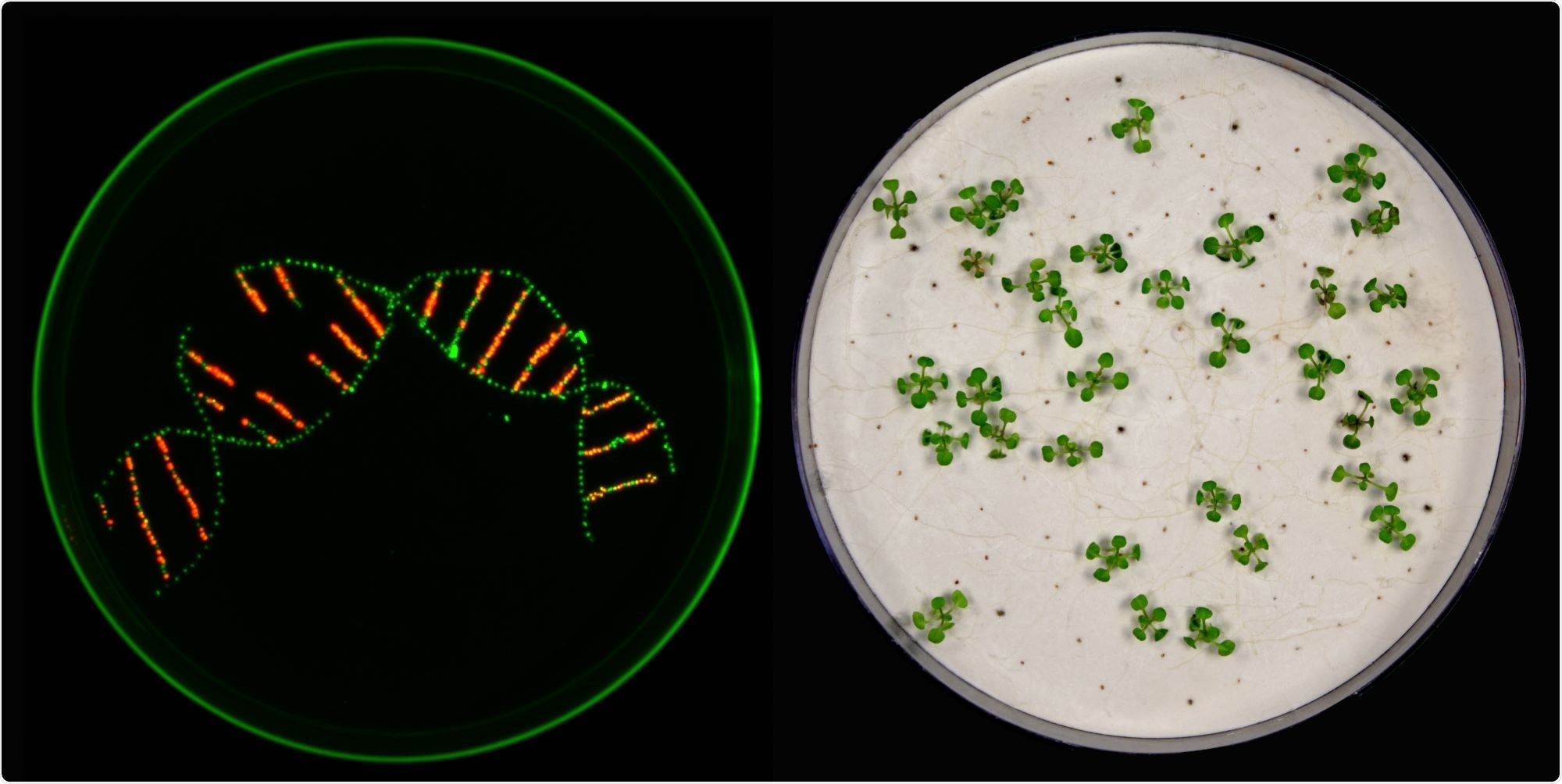Researchers have used an upgraded version of the gene-editing tool, CRISPR/Cas9, to knock out up to 12 genes in plants in just one blow. So far, this approach could only be performed on single or small groups of genes.

In their work, the researchers used markers to distinguish between different plant seeds. No difference can be seen with the naked eye. Under UV light, however, transgenic seeds appear red, non-transgenic seeds green. (left picture). Image Credit: Jessica Lee Erickson.
A research team from Martin Luther University Halle-Wittenberg (MLU) and the Leibniz Institute of Plant Biochemistry (IPB) has devised the new method. The technique makes it easier to study the interaction of different genes. The research work was published in The Plant Journal.
As described by Gregor Mendel, the inheritance of certain traits in plants is not always straightforward and simple. The monk, whose 19th-century experiments on the inheritance of traits in peas which laid the groundwork for genetics, was actually fortunate.
In the traits that Mendel studied, the rule that only one gene determines a specific trait, for example, the color of the peas, happened to apply.”
Dr Johannes Stuttmann, Plant Geneticist, Institute of Biology, Martin Luther University Halle-Wittenberg
According to Dr Stuttmann, things are usually much more complex. Most often, different genes interact with one another to produce specific traits, or they are partially redundant—that is, they lead to the same trait. In this case, when just one of these genes is turned off, the effects on the plants are not evident.
Now, by improving the CRISPR/Cas9 tool, the team from MLU and IPB has developed a new technique to investigate this complex phenomenon in a more targeted manner. Such gene-editing tools can be used to splice the organisms’ DNA at specific locations.
The team leveraged the research work of biologist Dr Sylvestre Marillonnet, who created an improved building block for the CRISPR/Cas9 tool at the IPB.
This building block helps to produce significantly more Cas9 enzyme in the plants, which acts as a scissor for the genetic material.”
Dr Johannes Stuttmann, Plant Geneticist, Institute of Biology, Martin Luther University Halle-Wittenberg
The investigators added up to 24 distinct guide RNAs that direct the scissor enzyme to the required sites in the genetic material. Experiments performed on the wild tobacco plant Nicotiana benthamiana and thale cress (Arabidopsis thaliana) demonstrated that the method is actually effective.
In tobacco plants, up to eight genes could be turned off at the same time, whereas in the thale cress, up to 12 genes could be turned off in a few cases.
Stuttmann added that this is a significant step forward.
“As far as I know, our group has been the first to successfully address so many target genes at once. This may make it possible to overcome the redundancy of genes,” added the biologist.
It was a much more complicated process to create multiple mutations, until now. This involved breading the plants in various stages, each with a single mutation, and then crossing with each other.
This is not only time-consuming, it’s also not possible in every case.”
Dr Johannes Stuttmann, Plant Geneticist, Institute of Biology, Martin Luther University Halle-Wittenberg
The new method designed at the MLU and IPB overcomes these drawbacks and may prove to be a more effective method of analysis. In the days to come, random combinations of many genes could also be tested to detect redundancies. Only if there are noticeable changes in the plant’s characteristics, it would become essential to particularly examine the genetic material of the new plants.
Source:
Journal reference:
Stuttmann, J., et al. (2021) Highly efficient multiplex editing: One‐shot generation of 8x Nicotiana benthamiana and 12x Arabidopsis mutants. The Plant Journal. doi.org/10.1111/tpj.15197.